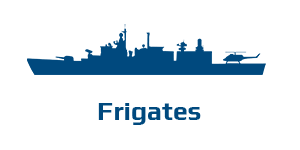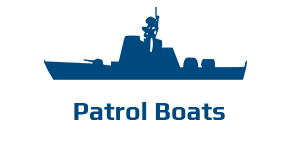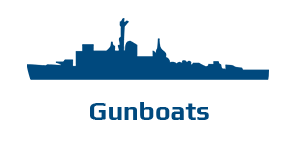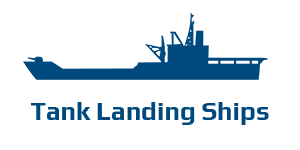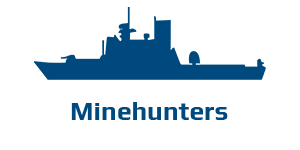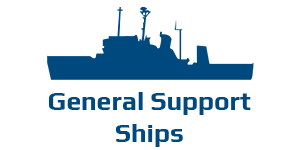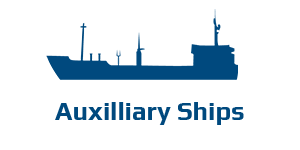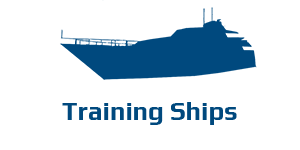History of the Hellenic Navy
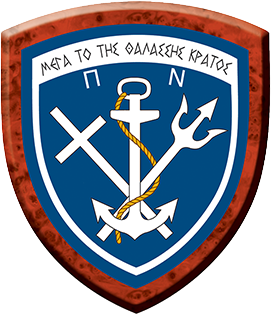
Up to 200 BC
The history of the Hellenic Navy does not have a concrete point of beginning.Its roots are lost in the depths of centuries of the history of mankind. In a geographical area of which any part is no more than 150 km.away from the sea, the Greeks developed from the Prehistoric Age societies which were coastal in their majority. There, they learned to exploit the marine resources and loved the sea. Automatically, the need for protecting and further spreading the cultures that they had developed was created, having as a result the progressive development of the first organised units of the Hellenic Navy.
The Trojan War, an expedition that is lost in the mist of fable of Iliad and Odyssey, was the first Pan-Hellenic naval expedition. Noteworthy that the camp of Aghaion was made from Greek boats pulled in the land. After the distraction of Troy and the end of the war which lasted for ten years, the adventures of the return of the fearless seamen-heroes back in their home grounds began. It is obvious that from the Archaic Period the Greeks had already earned good experience in the art of shipbuilding. The 8th century ships described by Homer are refered to as “swift” and “hollow”. Ships of that age as their predecessors, had an incomplete deck, which took the form of an extension of the prow on which men stood to follow the course of the ship, with a larger one at the stern for the captain or other officer. The crew sat on a lower level, on which the helmsman also sat. The size of the ships varied. Boats for short journeys and trading vessels had twenty oars, and the biggest ship of the period was the penticonter, which had fifty oars. This was a long, narrow vessel used as warship and a transport vessel. The hull was black, the prow was normally painted red or blue and adorned with a figure-head, and the stern was elevated. Both prow and stern ended in horns like those of a cow, or curling like those of a ram. There were two kinds of ships: one with a low, open hull, and the other with a raised hull.The sails used in this period were of linen cloth and were raised or lowered on the mast.A basic feature was the ram. This had first appeared in the Mycenaean period in the form of a slide projection, and after the 9th century it is fully formed and extends a considerable distance. There were three types of warships throughout the Archaic period: (1) Ships with a single bank of oars, with no parexeiresia (a vertical extension to the sides of ship, in which the oars were placed). These had 20 to 50 oars and in the later case they were known as penteconters. (2) Light warships, whiich did have a parexeiresia. The construction and use of these ships was confined to Attica. (3) Ships with two banks of oars. These had 80 to 120 seats for oarsmen. These types of warships held sway in Greece until the appearance of the trieme at the end of the 6th century B.C.. Thus, in the 7th and 6th centuries the Greeks dominated all the coasts of the Mediterranean. Beginning with the navigation in the Aegean Sea, they opened up new horizons by exploring previously unexplored areas; they explored all the Mediterranean Sea shores, set up colonies from the Pillars of Hercules (Gilbraltar) to the Black Sea, and vindicated their prosperity with the sovereignty of the seas. Hundreds of colonies were founded around the edge of the Mediterranean basin.
At this period, Athens suffered from a deficit of certain products, such as grain, and a surplus of others, like olive oil, wine, and her excellent pottery. The city decided, therefore, to construct a merchant fleet for trading purposes alongside the military one. To build this, wood and metal had to be imported. Conflicts inevitably followed, a climate of competition between the city-states was created, and there were disputes with other naval peoples. Once the Athenian merchant fleet was at sea, alongside the warships, the middle classes began to participate more actively in public affairs. At the same time, the processes intensified that gradually transformed the oligarchic-aristocratic forms of government into timocratic-democratic ones. The 6th century was a critical period for the political, economic, and geographical space of Greece and foreshadowed the triumph of the Classical civilization that was to follow. New paths were opened up in every sphere of life at this period, as a result both of the contacts arizing out of the Pan-Hellenic games at the major sanctuaries of Olympia, Delphi, the Isthmus, and Nemea, and of the colonies. The ships of the Archaic period inherited their form from their Geometric forerunners, and the shipbuilding in the 7th and 6th centuries had nothing new to add.
In the Classical Period the naval activities and arts were blossoming. The transition from the Archaic to the Classical periods was marked by the repulsing of the Persian threat. At the beginning of the 5th century, in 480 B.C., the long manoeuvrable Athenian triremes defeated the large, clumsy ships of the Persian king in the straits of Salamis, illuminating the dawn of Athens’ domination of the sea and the beginning of Classical civilization. Athens became the leading naval power in Greece, with Piraeus as its port, and its defences were strengthened by the construction of the Long Walls connecting the two cities. The decision to create the harbour at Piraeus was due to Themistokles, the brilliant victor of Salamis. His work was continued by Pericles, who succeded in creating a perfectly designed port that was an important naval and commercial center. Down to 86 B.C. when it was destroyed by the Roman general Sulla, Piraeus was one of the most populous and vital harbours in the Mediterranean. Characteristically, the phrase of Pericles that “A Sea State is a great State”, is quoted inalterably on the emblem of the modern Hellenic Navy.Thanks to its naval superiority and flourishing trade, Athens experienced unprecedented growth. Democracy was established on a firm basis, , intellectuals and artists achieved greatness in their fields, and the city evolved into the greatest commercial, social, intellectual, and artistic center in the ancient world. Thanks to the prestige and influence of Athens at this period, the 5th century B.C. is known in history as the “Golden Age of Perikles”. The rivalry between the Greek cities, however, and the apprehension of the more conservative of them at the innovative ideas of Athens led to the creation of two rival camps under the leadership of Athens and Sparta respectively. This, in turn, led to the outbreak of the Peloponesian War, which lasted from 431 to 404 B.C. and brought terrible suffering to Greece. At the outset, the Athenian Confederacy possessed the material and military strength that should have secure them victory. The death of Perikles in the third year of the war, however, proved to be a mortal blow. His successors were unable to continue with his plans. Rivalries, realignments, and passions undermined the mighty Athenian empire and led to defeat. One result of this war, apart from the loss of forces that seriously affected the history of both rivals in the years that followed, was to protract the division of Greece into city-states and short-lived confederations. It was not until thirty years later that the Athenians succeeded in reconstituting the Athenian Confederacy, and they never recovered their previous strength. In the 5th and 4th centuries, a period when military strength was directly related to to naval superiority, the typical ship was the trireme, which probably first appeared in the Mediterranean at the end of the 6th century. During the Percian Wars, the trireme was the only ship used. It was only after the middle of the 4th century that other types of ships made their appearance. Athenian inscriptors have preserved some interesting evidence as to the number of men carried on triremes. The number of oarsmen could be as large as 170, and there were also 30 officers, as well as specialist crew members and warriors. The oarsmen took up position in three rows corresponding to the three banks of oars. The men of the lower level were called thalamitae (“those that sit in the hold”), those in the middle zygitae (“those that sit on the thwarts”), and those on the top bank thranitae (“benchmen”). The last seem to have been held in greater esteem than the others and to have enjoyed better rowing conditions. They at least had access to sunlight and air. Each oarman used to carry his own oar, a cushion to sit on, and a twisted leather thong with which to tie his oar to the thole pin.
The 4th century B.C., which foreshadowed the Hellenism of the three continents, was the century of the overseas success of the Greek powers. This period, which is called Hellenistic period, was dominated by the Macedonian kings, first Philip II, followed by Alexander the Great. Despite the conflicts between the city-states of Greece, these rulers attempted to bring reconciliation to the Greeks, so that they could follow a shared destiny. In 334 B.C. Alexander the Great began with a Pan-Hellenic army of infantry and cavalry his great Eastern expedition up to the borders of India. With the conquest of Asia and Africa by Alexander the Great, the eastern Mediterranean became literally a Greek sea. The many ships he built sailed along the coast of India under their admiral Nearchos, who covered 1,000 miles in five months. Nearchos’s log was so detailed that it could be used by any captain who wanted to sail along this route. At the same period, Pytheas of Massalia, like his compatriot Eurhymenes, sailed into the Atlantic ocean and reached the British isles and the island of Thule. He gave an account of his great voyage, with comments, in his book Ges periodos (“Tour of the world”), which was for centuries the only source for the navigation of these seas. A major feature of the Hellenistic period, however, was the creation of Greek cities by Alexander himself on his campaign to the east, beginning with Alexandria in Egypt and ending with Alexandria Eschate in Sogdiane. After the death of Alexander the Great, in 323 B.C., this new, mighty empire was divided into three parts by his successors, the Diadochi: Antigonos took Greece and Macedonia, Ptolemy took Egypt, and Seleukos took Asia Minor and Syria. Although one would have expected Ptolemy to make himself master of the sea, with Egypt becoming the leading naval power, it was in fact Antigonos who, after a long interval, became “lord of the seas”. The rivalry and conflicts among the Successors led to the construction of ever larger ships. For half a century, these warships struggled for domination of the sea and control of the Eastern Mediterranean. In 360 B.C., Antigonos’s son, Demetrios Poliorketes, won a comprehensive victory in a naval battle against the Ptolemaic fleet for control of Salamis in southern Cyprus. For two decades, Demetrios was master of the seas. When he was obliged by political conflicts to return to Greece, however, the baton passed to the Ptolemies and the Egyptian fleet. The ships of this period were larger, broader, and heavier. A variety of needs led to the building of new typew of ship from as early as the 4th century B.C. Tetrereis, pentereis, heptereis (“seven-fitted”), and octereis (“eight-fitted”) made their appearance on the seas of the Mediterranean, which were dominated by the Greeks. An octereis, which had 1,600 oarsmen, had a crew ten times greater than that of the triremes, and could carry 1,200 soldiers.
200 BC to1831 AD
The Romans that prevailed later were the successors of the same naval traditions that rejuvenated in the Byzantine years with new achievements. New types of boats and pioneering arms as the famous “Greek fire”, ensured for the Byzantine fleet the sovereignty of the sea. Neglecting though their naval force was for Byzantium the main factor for the decline of its military supremacy. The capture of Constantinople by the Ottoman Turks in 1453 marked the end of the gradual decline of Byzantium, ended a successful period for the Hellenism and sank the Greeks in the dark of slavery. However, the supremacy of the Greek slaves in the naval strategy continued to give them precedence, raised their standard of living, and after the treaty of Kiutsuk Kainardji they were able to sail freely on the Greek seas.
During the 1821 revolution the navy played the most important role. The Greeks lost the battle many times on land, but never at sea while as fearless raiders with their fleet caused heavy losses to the Turkish Navy that tried to cease the Revolution. It is not accidental that the Greeks won their independence on the sea at a famous naval battle, the battle of Navarino in 1827 A.D.
From 1831 AD to1865
The history of the fleet of the free Greek state begins in 1828. When Ioannis Kapodistrias became governor of the liberated Greece, the Greek fleet comprised of few “veteran” ships, which had participated in the struggle for independence. The first minister of “Naval affairs” was Admiral Konstantinos Kanaris. The most powerful ship of the fleet at that time, frigate HELLAS, had been constructed in the USA during the last years of the revolution. However it was set on fire by Admiral A. Miaoulis and sank together with some other ships in the Poros island Naval Base on 1st August 1831, at the time of the Hydra islanders rebellion against Governor I. Kapodistrias.
During the invasion of Greece by the Ottomans in 1832, the fleet consisted of 1 corvette, 3 Brigs, 6 gollettes, 2 gunboats, 2 steamboats and a few more small vessels. The naval base was located since the era of Kapodistrias in Poros and head of the naval command structure was Andreas Miaoulis. Despite the limited means of that time, the shipbuilding of a new series of ships began at the same naval base while at the same time old ships were gradually decommissioned. Furthermore, continuous efforts took place for the education of officers. Young people were initially trained at the military Academy of Evelpides and afterwards they were transferred to the navy, as there was not any ” Naval School ” at that time. The first Naval School was founded in 1846 on the Corvette Loudovikos and Leonidas Palaskas was assigned as a director. However, the inefficient training of the officers, the conflict of those who carried modernizing ideas concerning naval art with the old-fashioned experienced Sea-fighters of the struggle for independence, as well as the national problems of the times, resulted into the restricted, inefficient, and poorly organized utilisation of the navy, which was limited to national transports, guarding of the sea borders, and battling piracy.
Later on the fleet was reinforced with more ships and in 1855 the first iron propeller-driven ships were ordered from England. These were the steamships Panopi, Plixavra, Afroessa, and Sfendoni.
From 1866 AD to 1910
During the Cretan revolution of 1866, the ships of the fleet were not in a state of achieving something remarkable. Such a failure led to the awakening of those responsible and proved the right of the dogma stating that: “The navy, as it represents a necessary weapon for Greece, should only be created for war and aim to fight”. Because of this, the fleet was supplied with new and bigger ships, while from 1885 with the use of iron in shipbuilding industry, the use of steam, the use of gun-power and the invention of the torpedo, the effectiveness and the appearance of the navy increased significantly.
Meanwhile, since 1878, because of the Russian-Turkish war and for reasons of security, the naval base was transferred to Faneromeni, Salamis and few years later it was transferred in the area of Arapis which remains till today. At the same time the naval school for officers was founded and its first director was Ilias Kanelopoulos. A committee from France headed by admiral Lezen, introduced the first scientific base for the organization of the navy and the methodological training of the personnel of lower ranks. Furthermore, the training of draftees was established in the old building of the naval base in Poros island, and the center was named “Central Progymnasium”. Under the presidency of Charilaos Trikoupis in 1889 the fleet was further reinforced with the order of the ships HYDRA, SPETSAI, and PSARA from France. Therefore, Greece faced the weak Turkish fleet in the Greek-Turkish war of 1897, securing its dominance in the Aegean sea, being weak however to react effectively in the outcome of the war which led to national humiliation. After the war of 1897, the Turkish fleet was reinforced and as a response to that in 1909 the battleship G. AVEROF was bought from Italy.
In 1907 the Hellenic Navy General Staff was founded and its first chief was admiral Kountouriotis. In 1910 an English committee was sent, headed by admiral Tufnel in order to contribute to the organization and training of the navy. The committee led to the adoption of the English style of management, organization, and training, especially in the areas of strategy and insignia.
From 1912 AD to 1921
The history of the fleet of the free Greek state begins in 1828. When Ioannis Kapodistrias became governor of the liberated Greece, the Greek fleet comprised of few “veteran” ships, which had participated in the struggle for independence. The first minister of “Naval affairs” was Admiral Konstantinos Kanaris. The most powerful ship of the fleet at that time, frigate HELLAS, had been constructed in the USA during the last years of the revolution. However it was set on fire by Admiral A. Miaoulis and sank together with some other ships in the Poros island Naval Base on 1st August 1831, at the time of the Hydra islanders rebellion against Governor I. Kapodistrias.
During the invasion of Greece by the Ottomans in 1832, the fleet consisted of 1 corvette, 3 Brigs, 6 gollettes, 2 gunboats, 2 steamboats and a few more small vessels. The naval base was located since the era of Kapodistrias in Poros and head of the naval command structure was Andreas Miaoulis. Despite the limited means of that time, the shipbuilding of a new series of ships began at the same naval base while at the same time old ships were gradually decommissioned. Furthermore, continuous efforts took place for the education of officers. Young people were initially trained at the military Academy of Evelpides and afterwards they were transferred to the navy, as there was not any ” Naval School ” at that time. The first Naval School was founded in 1846 on the Corvette Loudovikos and Leonidas Palaskas was assigned as a director. However, the inefficient training of the officers, the conflict of those who carried modernizing ideas concerning naval art with the old-fashioned experienced Sea-fighters of the struggle for independence, as well as the national problems of the times, resulted into the restricted, inefficient, and poorly organized utilisation of the navy, which was limited to national transports, guarding of the sea borders, and battling piracy.
Later on the fleet was reinforced with more ships and in 1855 the first iron propeller-driven ships were ordered from England. These were the steamships Panopi, Plixavra, Afroessa, and Sfendoni.
From 1922 AD to 1940
Later on, initially with the help of the allies and especially the English, and later on without any help at all, the Greek fleet participated in the mission for supporting the military operations in Thrace and the expedition in Asia Minor. After the expedition in Asia Monor ended (1922), there was an effort to renew most of the combat units. AVEROF and ELLI were repaired in France, the 4 torpedo ships in England and all the rest in Greece. For the first time with the addition of a commercial ship, the fleet was equipped with a mobile-repair team, which was based on that commercial ship called IFESTOS, and 6 submarines were ordered from France, of which the most notable were PAPANICOLIS and KATSONIS. The training of the officers was periodically advanced with English missions. The serving period of seamen was 18 months, and the vavy force included also some volunteers. From 1928, under the governance of E. Venizelos, a peace orientated policy was established with the abundance of the so-called “Great-Idea” and the reduction of the Defense expenditures. After his fall in power in 1932, the political turbulence of the time was interrupted by a Venizelian military movement of 1935 and of course the dictatorship of I. Metaxas which changed the military scene. Two torpedo ships were ordered from England, the B. GEORGIOS and B. OLGA, 4 minesweeper ships were bought as well as 12 water planes and 1 tanker. At the same time plans were designed for the further reinforcement of the Hellenic navy and its preparation for the coming war. The coastal defense was organized according to the division of the coasts of the country into 6 naval defense areas, which although they were poorly supported financially, they managed to install air defense systems in land, organized mine fields and submarine blocks for the protection of crucial parts and bases throughout the country.
After the sinking of ELLI in the port of Tinos on 15-08-1940 by the Italian submarine Delfino, the Hellenic Navy General Staff decided to move towards the first stages of war. The basic tactic chosen by the navy was the confrontation of every attack made by the enemy until the arrival of the English fleet in the area.
From 1941 AD to 1942
The beginning of the war found the navy prepared for war actions. Initially the ships were assigned the task to escort suppliers for the army fighting in Albania. Additionally the Greek submarines took action against sea transportation of the enemy in the Adriatic Sea with bright success. However, when Germany initiated the plan Barbarosa, the aircrafts of the Luftwaffe flying from Bulgarian Air-bases launched severe attacks against the Hellenic navy and commercial ships as well as against the land installations throughout the whole country. The losses of the fleet were tragic. 25 ships sank between 4 and 25th of April 1941. The Commander-in-Chief of the Hellenic Navy General Staff admiral A. Sakelariou made the decision (following the political leaders of the country) to continue the struggle. Consequently the gradual retreat of the remaining ships began. Initially they headed to Souda of Crete and later on to Alexandria. By the end of April 1941 there were 17 Greek ships (1 battle ship, 6 torpedo ships, 5 submarines and 1 auxiliary) in the bight of Alexandria, the only ones that united with the English fleet and represented at the same time the only free Greek soil. The Hellenic ships, except for B. OLGA, were old and heavily used for war purposes, and thus, needed to be repaired so they could be able to correspond to their future role. The ships of the fleet have been repaired in the English shipbuilding bases in Egypt and India and their armament was replaced by one of new technology. The basic missions of the ships once again involved were to escort other ships, and patrol in the Mediterranean as well as in the Indian Ocean and the Persian Gulf, aiming mainly to the support of the Soviet Union. At the same time, schools operated in Egypt in order to train old members and newcomers. Personnel was sent to England for the receipt of new ships. Furthermore, the service that was created for the destruction of mines resulted into the creation of a whole fleet of minesweepers. The Hellenic ships resisted hard with sacrifice in the so-called battle of Alexandria, denying escaping to the Red Sea, even when the forces of Rommel were preparing for a counter-attack. In 1942 the English delivered to the Hellenic navy a whole squad of the latest models of torpedo-boats, which were named KANARIS, MIAOULIS, PINDOS, ANDRIAS, as well as the corvette SACHTOURIS and the submarine MATROZOS. Many of the damages and the losses of the enemy occurred because of the action of the Hellenic ships, whose crews were full of courage, devotion, and willingness to sacrifice themselves. On the other hand, the contact with Greece was not lost. The Hellenic submarines were constantly patrolling the Greek coasts carrying British and Greek commandos as well as war material. They captured or sank enemy vessels, terrorized the Italians in the Dodekanese and caused many casualties to the Germans in the Aegean Sea.
From 1943 AD to 1966
On 18-09-43 the B. OLGA was a protagonist in all the great victories against the enemy in the Mediterranean. Together with 2 English torpedo boats it destroyed the German enemy that was ready to unload troops in Dodekanese.
However, it was sank after a severe attack by stouka-type German aircrafts in the port of Leros. While the attacks of the other allied ships were concentrated in the Dodekanese, ADRIAS was in the front line during the bombing of the coasts of Kalymnos. The night of 22-10-1943 its bow exploded after hiting on a mine. Despite the fire and the damages in her armament, its wounded captain I. Toumpas ordered the crew to collect the castaways of an English torpedo boat and to return to the port of Alexandria. The ship and its crew were welcomed as heroes. The action of the navy was completed with the initiation of the plan “return of the navy to Greece” which defined the way of the arrival of the fleet and the government from Egypt back home. During the end of the war, the ships of the fleet were spread to the islands and the ports of the Aegean sea aiming to hunt down the last remaining elements of the enemy, escort ships with supplies for civilians and the refreshing of old naval services that would in turn contribute to the establishment of the Hellenic governance. It also participated to the overthrowing of EAM-HELLAS from the coastal areas and especially from the area of Athens.
Following the reconstruction of the Hellenic state, the need for renewing the ships of the fleet was more than necessary.
Most of the ships were given to Greece as American military aid. Other ships were returned to the countries they belonged to and very few were bought. Most of the ships given to Greece were in bad shape and needed repairing and replacement of their old armament. Few of them were really new. In 1947 6 gun ships were given to Greece by the US (ARSLANOGLOU, BLESSAS, PEZOPOULOS, MELETOPOULOS, XATZIKONSTANTIS, LASKOS).As an act for compensation in 1950 the ship Elli was gifted by Italy, while in 1951 the torpedo-boats Doksa and Niki, the mine-boats Aktion and Amvrakia, the tanker Naukratousa and the submarines Posidon and Amfitriti were given by the US. During the period 1958-1960, 6 vehicle carriers, 4 Destroyers (of Fletcher-type) the Aspis, Velos, Lonchi, Sfendoni, 2 landing support ships Blachabas-Maridakis and 3 other landing ships Ikaria, Lesvos, Rodos were also given by the US. In 1964 the submarine Triena was delivered as well as 6 minesweepers Aidon, AIglI, DaPHnE, Doris, KICHLI, Kissa.
From 1967 AD to 1974
During the dictatorship of 1967, the navy under its Commander-in-Chief of the General Staff admiral K. Egkolfopoulos who resigned, expressed its opposition to the fall of democracy. In the following months 61 officers were forced to retire. The major representative of the navy’s resistant democratic action was the so-called “movement of the navy” which was not executed and managed to severely damage the military regime and to force it to reverse its plans. On 25-05-73 the Destroyer VELOS entered the port of Fiumitsino of Italy and through this escape the opposition of the majority of the armed forces to the military regime was expressed.
The armed forces and the Greek people wanted to inform the global public opinion that there was an illegal violent military regime in Greece. During the invasion of Cyprus by Turkish Forces, emphasis must be given to the 2 torpedo boats T1 and T3, which at the dawn of the 20th of July 1974 confronted the Turkish naval force of Attilas outside Kerynia, but they were defeated by the severe Turkish Air-attack. The captain of T3 E. Tsomakis was killed together with his crew. On the same day, the Landing ship LESVOS commanded by captain E. Chandrinos, bombed the Turkish military forces in Pafos under the enetic fortress of the city until the force was surrendered. The fact that the specific ship unloaded the whole unit of the special forces (ELDYK) which few hours before had loaded to transfer it to Greece, was interpreted by the Turkish side as an attack of the Greek fleet. Therefore the Turkish aircrafts bombed and sank accidentally a nearby Turkish destroyer while another suffered serious damages.
From 1980 AD to Today
After the change of regime and especially from the end of the 80s, the navy works on new strategies concerning the defense of the country within the framework of the EU and the new structure of NATO. The new role of the navy is not only concentrated on the control of the Hellenic frontiers and borders. It is also involved into peacekeeping actions under the umbrella of the UN. Since 1982, the defense expenditures are programmed on a 5-year business plan.
The role of the Navy as well as the importance of the geopolitical position of the country were emphasized in the recent gulf crisis during which in the Naval base of Souda 97 ships were conserved and 13000 tones of material where loaded and unloaded. 31000 flight sorties were served and aircrafts were supplied with 4.500 million tones of fuel. The base worked on a 24 hour basis following exhausting rhythms and being very efficient carrying out its duty. Greece participated in the NATO embargo to Iraq with its frigates ELLI and LIMNOS. Furthermore, it participated with 2 ships to the international force formed off the Albanian crisis of 1997, assisting in the transportation of foreign citizens from Avlona and Dirachion to Greece.
On 31-01-96 the navy suffered the loss of 3 officers (X. Carathanasis, P. Blaxakos, E. Gialopsos) during the Imia crisis, North East of the island of Kalymnos.
Under the change of the dogma concerning the integrated defense of the areas of Greece and Cyprus in 1997, the navy aims to develop its power and domination into this strategically important area of the South-east Mediterranean. Its goals are to protect the Hellenic rights and border integrity, protect commercial sea-lines, and protect as well as cultivate a spirit of security to the Hellenic population of the Greek islands. Furthermore, it has the role of the transporter of supplies for the rest of the units of the armed forces and contributes mainly through Air transport to servicing the health needs of the population of the islands. Finally, the presence of the navy in the islands and especially in those of the eastern Aegean sea and the area of Corfu is constant. Hellenic Navy ships carry out patrolling missions in order to deal with any possible external threats and provide support to the Hellenic Coast Guard in central issues such as preventing illegal immigration, drug smuggling etc.

